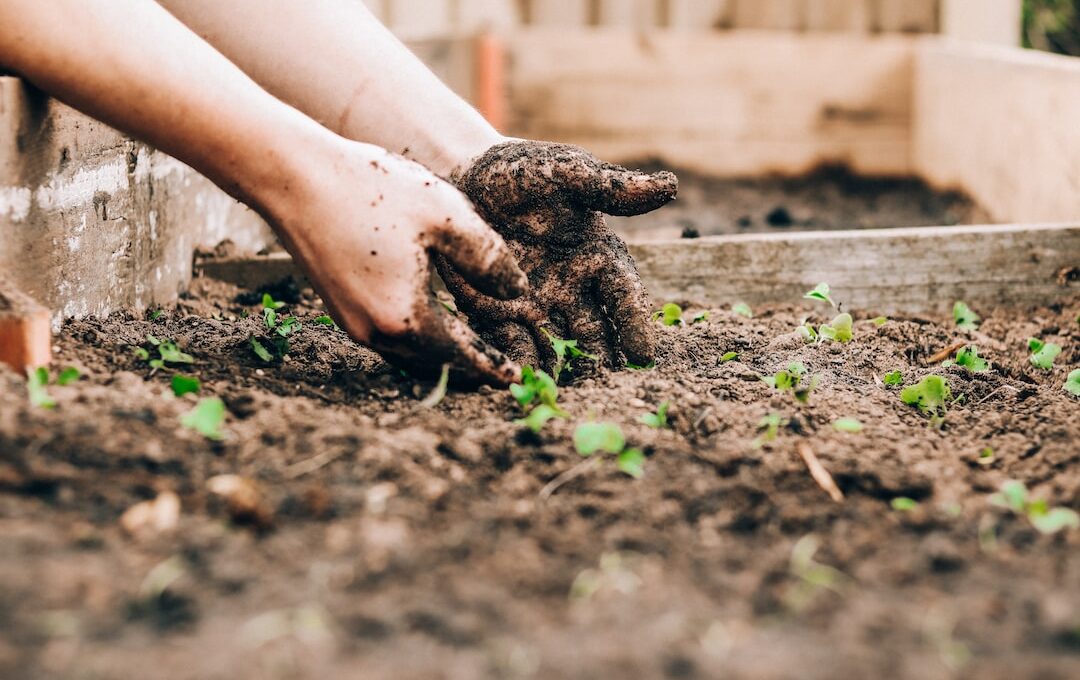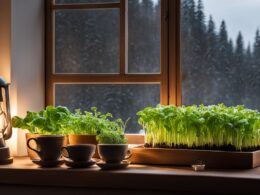Are you wondering how often you should water your beloved Lambs Ear plant? Well, worry not! In this article, we will guide you on the proper watering routine to ensure the health and safety of your Lambs Ear.
Lambs Ear is a resilient plant that thrives in dry and arid conditions, making it a perfect addition to your garden or indoor space. However, it is crucial to understand its watering needs to avoid overwatering or underwatering, both of which can harm the plant.
To determine the frequency of watering, consider the natural habitat of Lambs Ear and assess environmental factors such as temperature and humidity. Monitoring the moisture levels in the soil is also essential to prevent any water-related issues.
In different seasons, the watering frequency may vary, so it’s important to adjust accordingly. Signs of overwatering and underwatering should be observed to ensure the plant’s well-being.
Stay tuned to learn about effective watering techniques and tips for proper drainage, which are crucial for maintaining a healthy Lambs Ear.
Let’s dive in and nurture your Lambs Ear with care and caution!
Quick Summary
- Lambs Ear prefers well-draining soil and should be watered deeply once a week.
- Signs of overwatering include yellowing or wilting leaves, foul odor, and presence of fungus or mold.
- Signs of underwatering include dry, brittle, and brown leaves.
- Regularly checking soil moisture is important for adjusting watering frequency.
Understanding Lambs Ear’s Watering Needs
To keep your lambs ear healthy and thriving, you should make sure to water it regularly, allowing the soil to dry out slightly between watering sessions. Understanding the growth patterns and proper sunlight exposure for lambs ear is essential for creating a safe environment for this plant to thrive.
Lambs ear is a drought-tolerant plant that prefers well-draining soil. Overwatering can lead to root rot and other fungal diseases, so it’s important to strike a balance. Water your lambs ear deeply once a week, allowing the water to penetrate the soil and reach the roots. Make sure the soil is moist but not soggy. If the soil feels dry to the touch, it’s time to water again.
In terms of sunlight exposure, lambs ear prefers full sun but can tolerate partial shade. It’s important to provide at least six hours of sunlight per day to promote healthy growth. If you’re growing lambs ear indoors, place it in a sunny window where it can receive adequate sunlight.
By understanding the growth patterns and proper sunlight exposure for lambs ear, you can create a safe environment for this plant to flourish. Remember to water it regularly, allowing the soil to dry out slightly between watering sessions, and provide enough sunlight for optimal growth.
Consider the Plant’s Natural Habitat
Consider the plant’s natural habitat so you can provide the ideal watering schedule for lambs ear. Understanding the plant’s natural habitat is crucial in determining its watering needs.
Lambs ear is native to regions with dry climates, such as the Mediterranean. In its natural habitat, this plant is adapted to survive with minimal water. Therefore, it is important to replicate these conditions when watering lambs ear in your garden.
To ensure the safety of your lambs ear, follow these guidelines for watering:
-
Water sparingly: Lambs ear prefers a dry environment, so avoid overwatering. Only water when the soil feels dry to the touch.
-
Deep watering: When you do water, make sure to water deeply. This encourages the plant’s roots to grow deeper, making it more resilient to drought conditions.
-
Well-draining soil: Lambs ear thrives in well-draining soil. If your garden soil retains water, consider adding organic matter or perlite to improve drainage.
By considering the plant’s natural habitat and implementing these watering practices, you can provide the ideal conditions for your lambs ear to thrive. Remember, less is more when it comes to watering this drought-tolerant plant.
Assess Environmental Factors
Assessing environmental factors can help create the perfect conditions for your lambs ear to flourish. When it comes to sunlight exposure, it’s important to find the right balance. Lambs ear thrives in full sun to partial shade, so make sure it is getting enough sunlight but not too much. Too much direct sunlight can scorch the leaves and cause damage to the plant. On the other hand, if your lambs ear isn’t getting enough sunlight, it may become leggy and weak.
Humidity levels also play a crucial role in the well-being of your lambs ear. This plant prefers a moderate level of humidity, so it’s important to provide a suitable environment. If the air is too dry, especially in heated indoor spaces during winter, the leaves can dry out and the plant may suffer. To increase humidity, you can mist the leaves with water or place a tray of water near the plant. This will help create a slightly more humid environment for your lambs ear.
By assessing sunlight exposure and maintaining appropriate humidity levels, you can ensure that your lambs ear is thriving and healthy. Remember to monitor these factors regularly and make adjustments as needed. Providing the right conditions will help your lambs ear flourish and bring beauty to your garden.
Monitor Soil Moisture Levels
Ensure that the moisture levels in your soil are carefully monitored to maintain the health and vitality of your lambs ear plant. Monitoring techniques play a crucial role in ensuring the proper growth and development of your plant. The importance of soil moisture cannot be stressed enough, as it directly affects the overall well-being of your lambs ear.
To effectively monitor soil moisture levels, there are a few techniques you can employ. One method is to use a moisture meter, which allows you to accurately measure the moisture content in your soil. This device helps you determine when it’s time to water your lambs ear plant, preventing under or over-watering.
Another technique is the finger test. Simply insert your finger about an inch into the soil, and if it feels dry, it’s time to water.
Maintaining adequate soil moisture is vital for the survival of your lambs ear. Insufficient moisture can lead to wilting and stunted growth, while excessive moisture can cause root rot and other diseases. By regularly monitoring the moisture levels in your soil, you can provide just the right amount of water to keep your lambs ear plant thriving.
Remember, keeping your lambs ear plant healthy is a top priority. By using effective monitoring techniques and ensuring appropriate soil moisture levels, you can promote the longevity and vitality of your plant.
Watering Frequency During Different Seasons
During different seasons, it’s important to adjust the frequency of watering for your lambs ear plant. Understanding the watering schedule and requirements can help ensure the safety and health of your plant.
In general, lambs ear plants prefer well-drained soil, so it’s crucial not to overwater them. During the growing season, which is usually spring and summer, you should water your lambs ear once a week. However, you should always monitor the soil moisture levels before watering. Stick your finger about an inch into the soil, and if it feels dry, it’s time to water.
In the winter months, when the plant is dormant, you can reduce the frequency of watering to once every two to three weeks. This is because the plant requires less water during this period.
Remember, it’s better to underwater than to overwater your lambs ear plant. Overwatering can lead to root rot and other diseases that can harm the plant.
By following a proper watering schedule and adjusting it according to the seasons, you can ensure the longevity and beauty of your lambs ear plant.
Can Over-Watering Cause Odor Problems in Composting?
Over-watering can contribute to common composting odor problems. Excess moisture hinders oxygen circulation, leading to anaerobic conditions in the compost pile. This anaerobic environment encourages the growth of odor-causing bacteria, resulting in unpleasant smells. Proper moisture balance is crucial for effective composting and to prevent common composting odor problems from occurring.
Signs of Overwatering and Underwatering
Now that you know about the ideal watering frequency for lamb’s ear during different seasons, let’s discuss the signs of overwatering and underwatering. It’s important to keep an eye out for these symptoms to ensure your plant’s health and prevent any potential damage.
Overwatering can lead to root rot and other problems that can harm your lamb’s ear. Some signs of overwatering include yellowing or wilting leaves, a foul odor coming from the soil, and the presence of fungus or mold. If you notice any of these symptoms, it’s crucial to adjust your watering routine accordingly and allow the soil to dry out before watering again.
On the other hand, underwatering can cause the leaves to become dry, brittle, and brown. The plant may also appear limp and wilted. To prevent underwatering, make sure to regularly check the moisture level of the soil and water your lamb’s ear when the top inch of soil feels dry.
To ensure the safety of your lamb’s ear, here are some prevention tips:
- Avoid overwatering by checking the soil moisture before watering.nn2. Provide proper drainage to prevent water from pooling around the roots.nn3. Adjust your watering schedule according to the weather and season.
By understanding the symptoms of overwatering and underwatering and taking preventive measures, you can maintain the health and vitality of your lamb’s ear plant.
Watering Techniques for Lambs Ear
To achieve optimal growth and vibrant foliage, it’s essential to master the art of watering for your beloved lamb’s ear plant. Proper hydration is crucial for its health. One key aspect of proper watering is establishing a regular watering schedule.
When watering lambs ear, it’s important to find the right balance. Overwatering can lead to root rot and other fungal diseases, while underwatering can cause dehydration and wilting. To avoid these issues, water your lamb’s ear plant deeply and thoroughly, but allow the top inch of soil to dry out between waterings.
To water your lamb’s ear, use a gentle stream of water directed at the base of the plant. Avoid excessively wetting the foliage, as this can lead to diseases. Water in the morning or early evening to minimize evaporation and allow effective moisture absorption.
By following a consistent watering schedule and providing proper hydration, you can ensure the health and vibrancy of your lamb’s ear plant. Remember to regularly check the soil moisture and adjust your watering frequency accordingly. With these watering techniques, your lamb’s ear will flourish and bring beauty to your garden.
Tips for Proper Drainage and Watering Routine
Proper drainage and a consistent watering routine are essential elements for maintaining the health and vibrancy of your lamb’s ear plant. When it comes to watering your lamb’s ear, it’s important to strike a balance. Overwatering can lead to root rot and other issues, while underwatering can cause the plant to become dry and wither.
To prevent these problems and improve soil quality, here are some tips to consider:
-
Use well-draining soil: Opt for a soil mix that allows water to flow through easily, preventing water from pooling around the roots. This will help prevent root rot and ensure that your lamb’s ear stays healthy.
-
Water deeply but infrequently: Instead of giving your plant a light sprinkle every day, water deeply but less frequently. This encourages the roots to grow deeper into the soil and promotes a stronger, more resilient plant.
-
Check soil moisture before watering: Before watering, check the moisture level of the soil by inserting your finger about an inch deep. If it feels dry, it’s time to water. If it’s still moist, hold off on watering for a few more days.
By following these tips, you can create an optimal watering routine for your lamb’s ear plant, ensuring its longevity and preventing issues like root rot. Remember, a little attention to proper drainage and watering can go a long way in keeping your plant thriving and vibrant.
Frequently Asked Questions
Can I use tap water to water my Lambs Ear plant?
Yes, you can safely use tap water to water your lambs ear plant. Just make sure to follow a regular watering schedule to keep the soil moist, but not soggy.
Is it better to water Lambs Ear in the morning or in the evening?
It is generally better to water your lambs ear in the morning rather than in the evening. Morning watering allows the plant to dry out during the day, reducing the risk of overwatering, which can harm the plant.
How long should I wait between watering sessions?
To determine how long to wait between watering sessions for lambs ear, check the soil moisture by sticking your finger about an inch deep. Wait until the top inch is dry before watering again, ensuring the plant isn’t overwatered.
Can I use a spray bottle to water my Lambs Ear plant?
Yes, you can use a spray bottle to water your lambs ear plant. Misting with a spray bottle provides gentle hydration and helps prevent overwatering. It’s a safe and effective way to keep your plant healthy.
Should I water my Lambs Ear plant more frequently during its flowering season?
During the flowering season, you should water your lambs ear plant more frequently. However, be careful not to overwater as it can lead to root rot. Pruning during this time is also recommended. Common pests include aphids and spider mites.
Conclusion
So, now you know how often you should water your lambs ear. Remember to consider its natural habitat and the environmental factors around it.
Monitor the moisture levels of the soil and adjust your watering frequency accordingly. Be aware of signs of overwatering or underwatering and make sure to use proper watering techniques.
And don’t forget about providing good drainage for your plant. By following these tips, you can ensure that your lambs ear stays healthy and thriving. Happy gardening!








